Who are North Carolina’s public school students?

Carolina Demography’s director, Nathan Dollar, recently participated in the NC Business Summit on Public Education hosted by the Public School Forum of North Carolina. His slides were adapted for this piece, which was originally published by EdNC.
We all have an image in our heads of a public school student. Often that image is based on our own experience or the experiences of our children and grandchildren.
And most often the laws, regulations, and public policies that control how education is provided are enacted with those students in mind, not with the images of students who have challenges and need support.
Here is what you need to know about the demographics of North Carolina and the demographics of our public school students.
by Nathan Dollar, Carolina Demography
The population of North Carolina is growing.
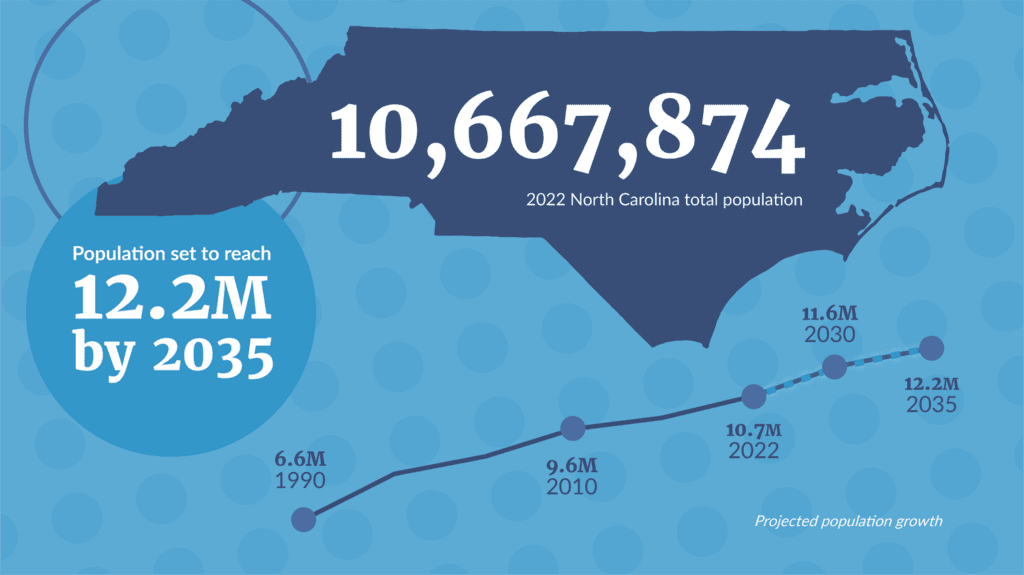
But North Carolina’s population is not growing evenly across all 100 counties.
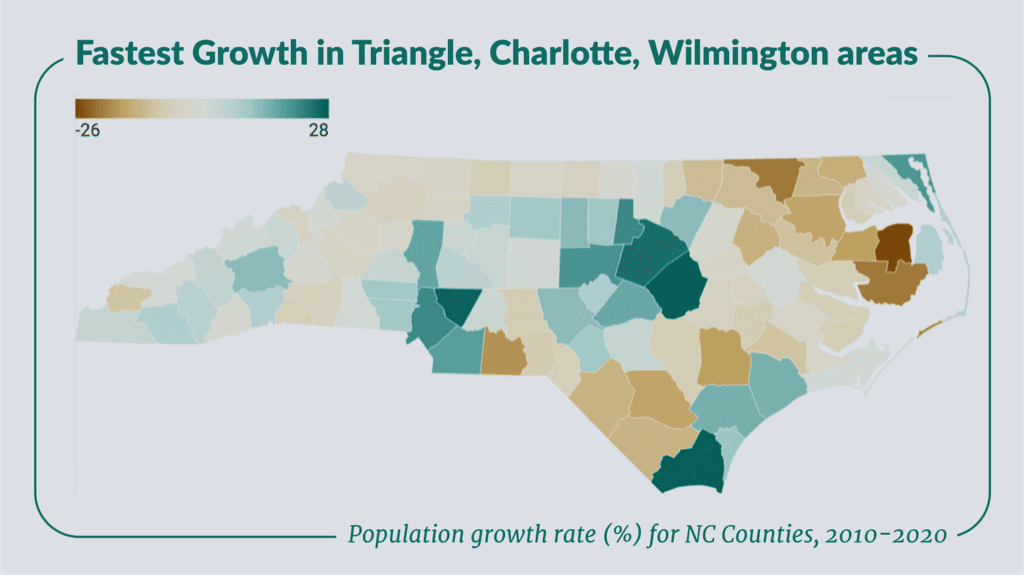
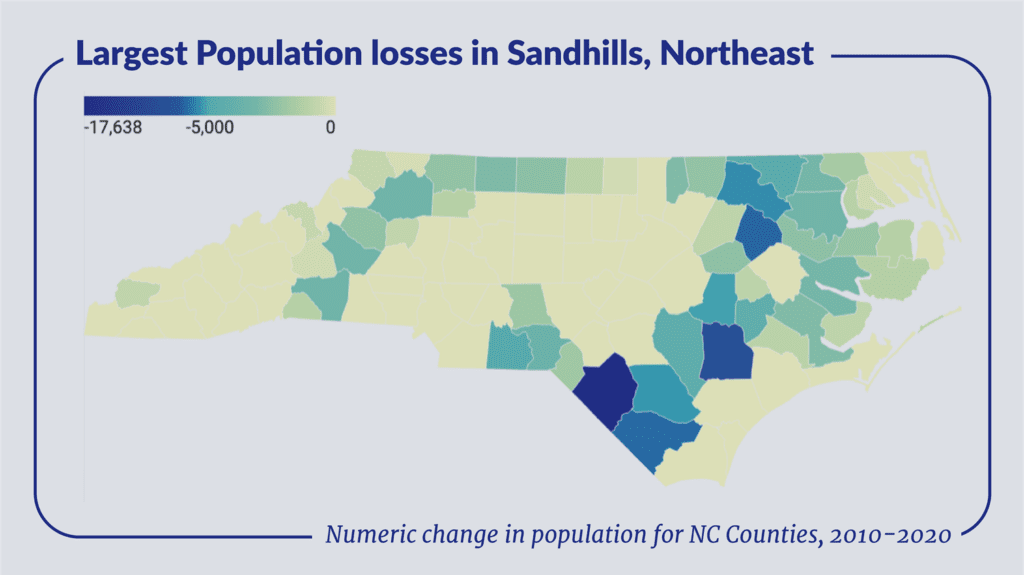
A decline in fertility and an increase in migration to North Carolina have two major implications for our state’s population.
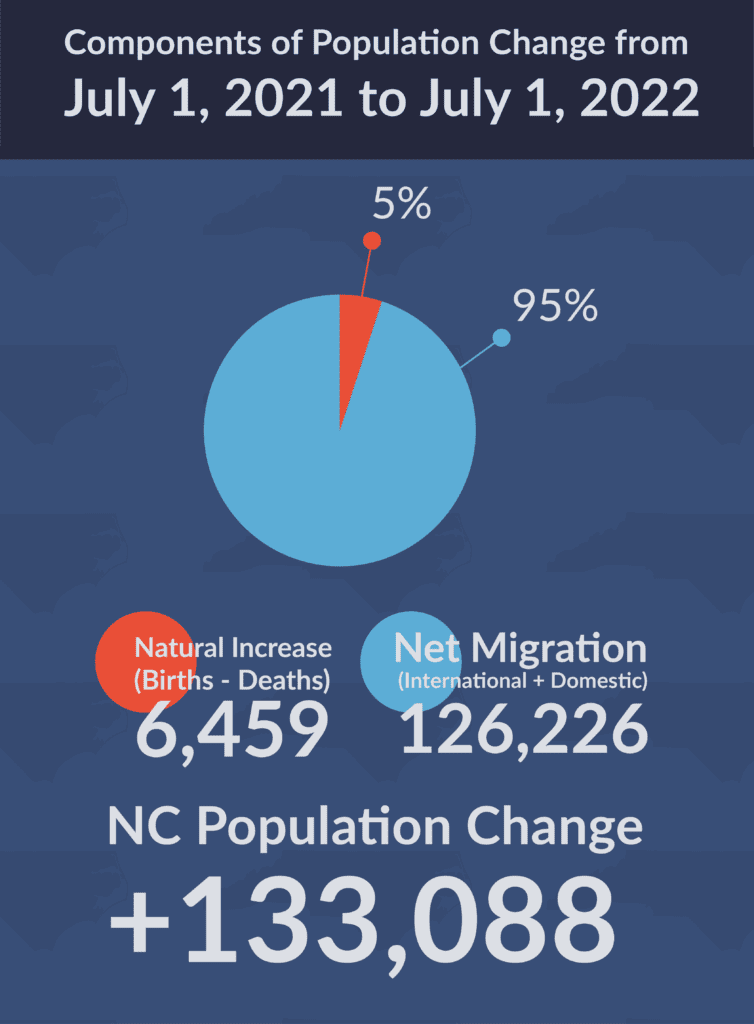
The population of North Carolina is getting older.
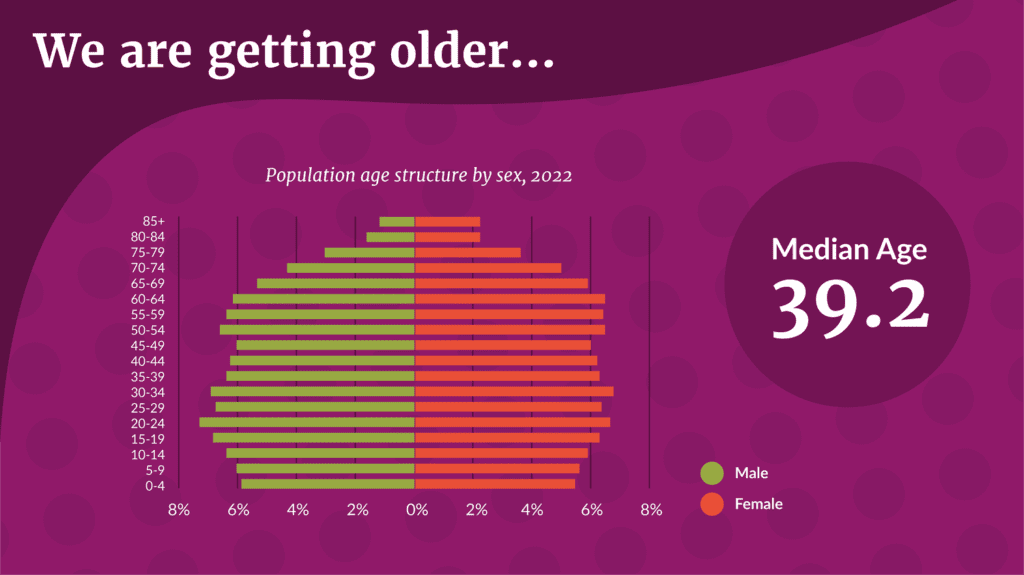
And the population of North Carolina is getting more diverse.
Pre-school aged kids are the most diverse.
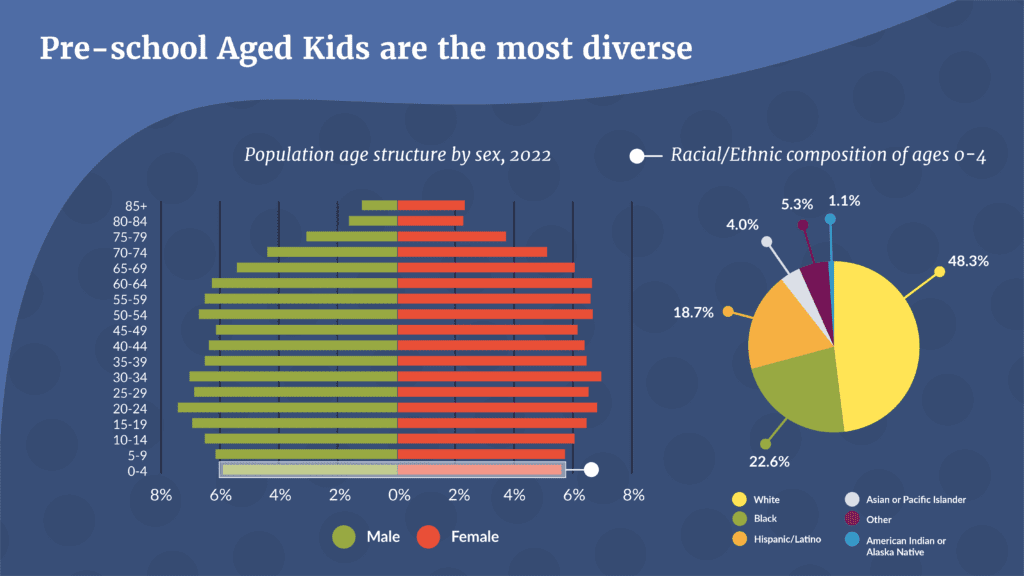
School-aged kids are also more diverse.
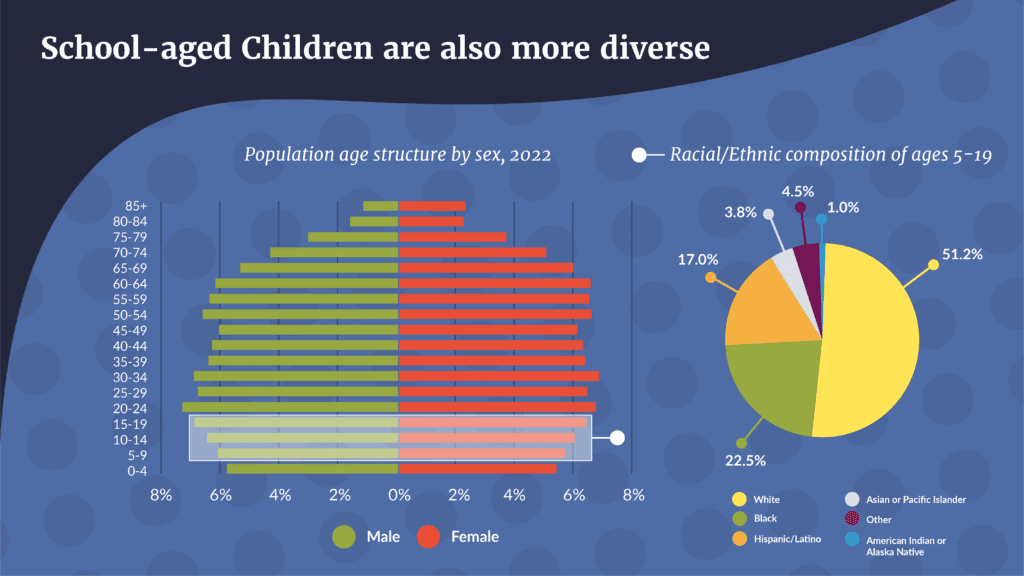
Since 1990, there has been exponential growth in North Carolina’s foreign-born population in both urban and rural counties.
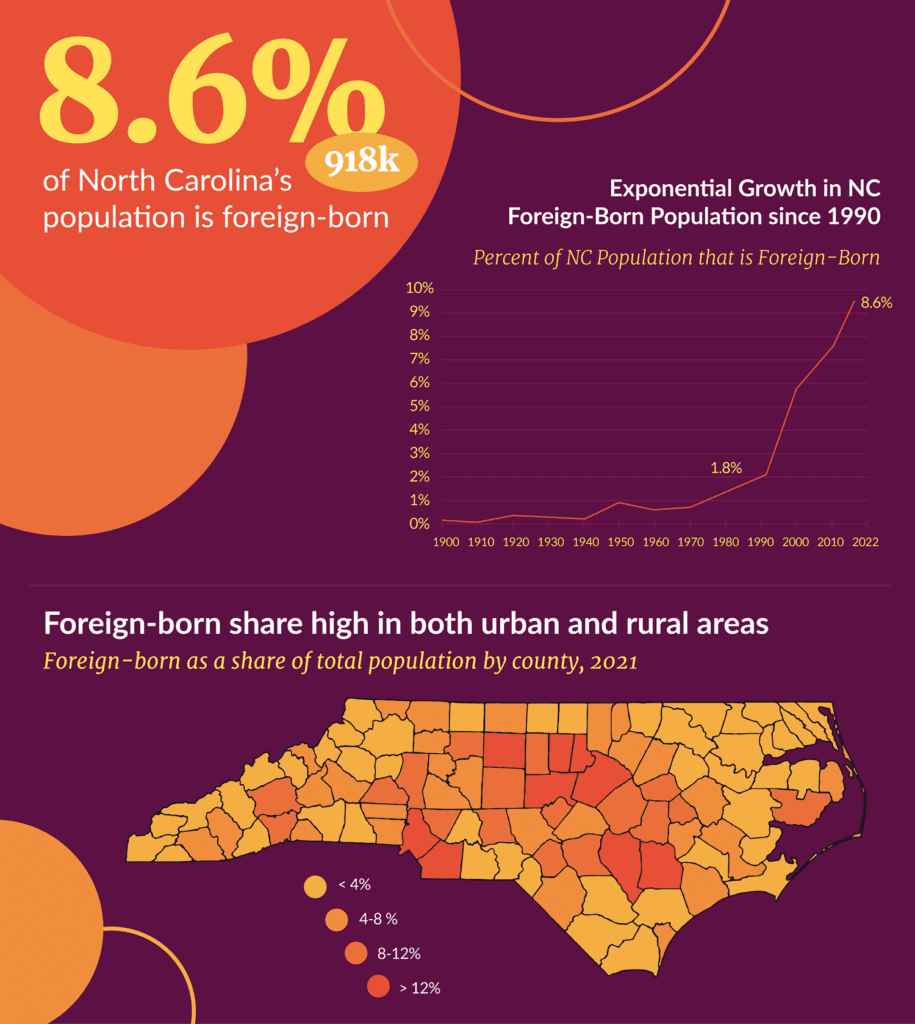
Because of demographic differences across our 100 counties, the challenges our school districts face and the support they need varies too.
North Carolina has 115 school districts: 100 county districts and 15 city districts.
In 2023-24, our traditional public schools are serving 1,358,003 students.
467,643 of those students — 34% — are in school districts in North Carolina’s 78 rural counties.
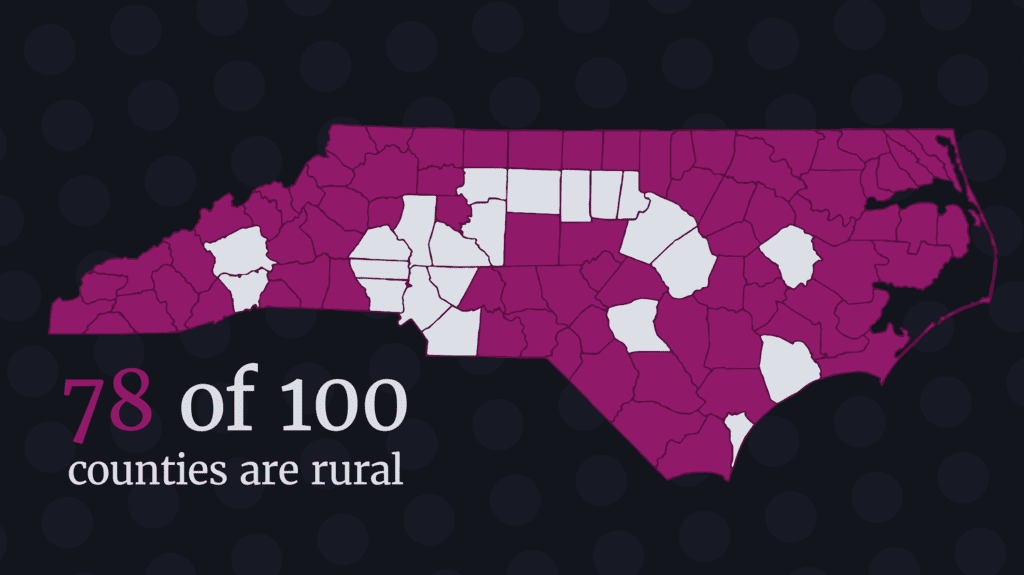
591,544 of those students — 44% — are in low-wealth school districts. This number does not include the students in the eight city-based school districts that are classified as low wealth.
In the map below, the counties that are white are not low-wealth counties.
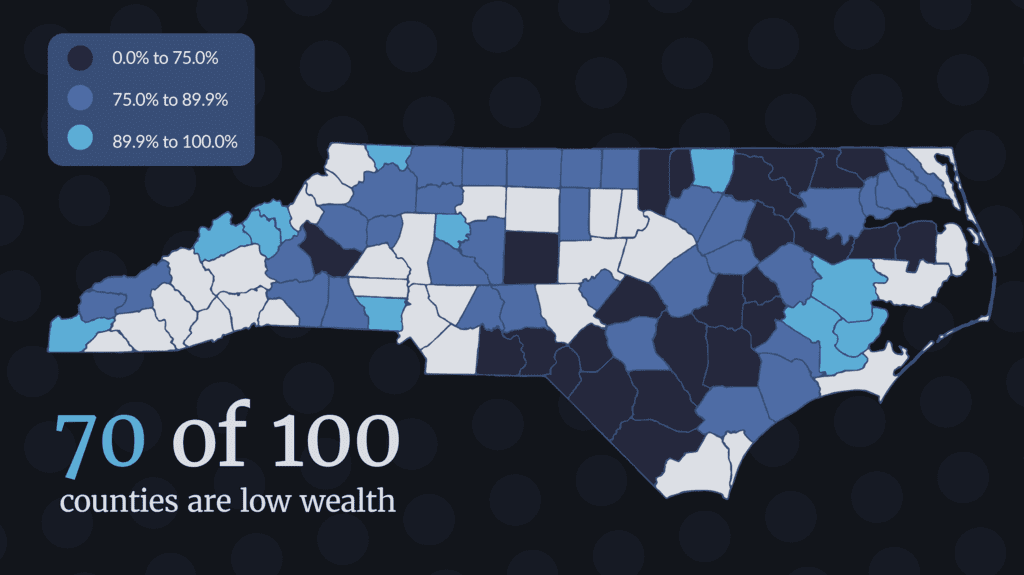
51,368 of those students — 4% — are in school districts that serve fewer than 3,300 students, which by law designates them as small school districts. Small school districts are challenged because they have many of the same costs as larger districts but less money because funding is driven by enrollment.
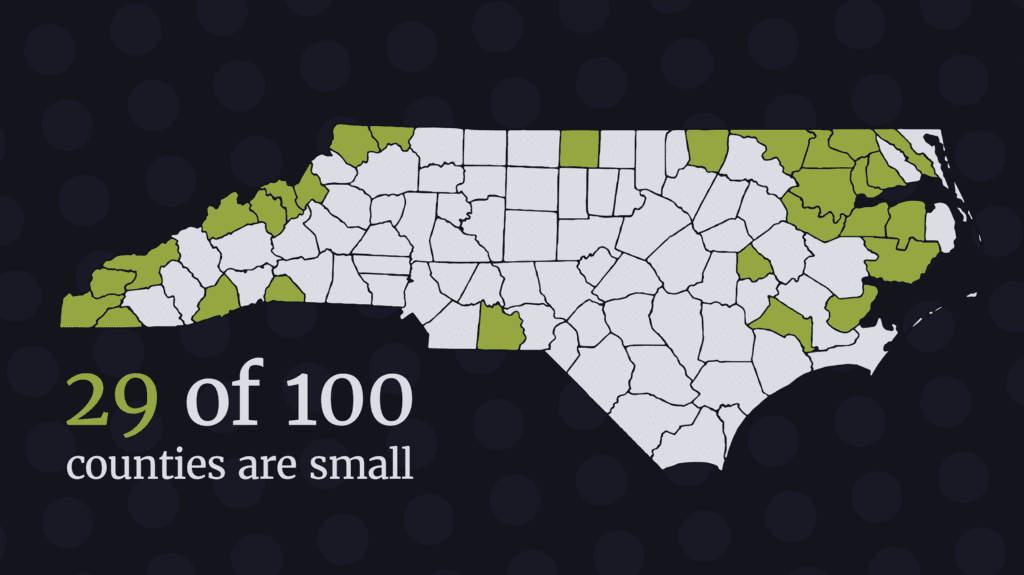
209 charter schools, nine lab schools, one regional school, and two virtual schools serve 146,261 students — almost 10% of the total public school student population.
The total number of students served by public schools across North Carolina in 2023-24 is 1,504,424.
Our public school students speak different languages, they have learning differences, they have physical and mental health challenges, some get pregnant, and others need to be served in alternative settings, including psychiatric residential treatment facilities, juvenile detention centers, and youth development centers.
In 2023, our public school students spoke at least 389 different languages, according to the N.C. Department of Public Instruction. In Wake County, 267 languages are spoken.
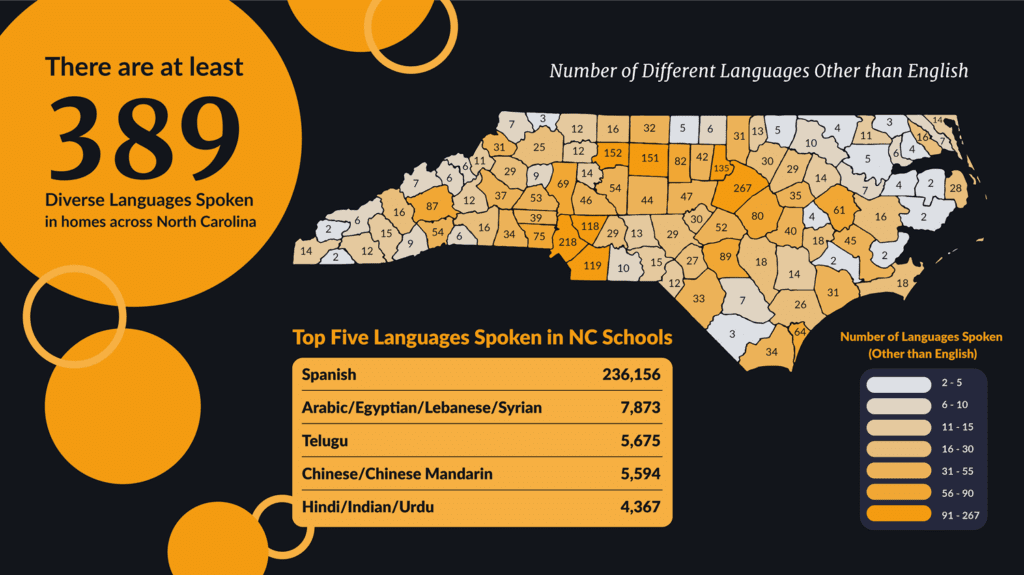
Guilford County Schools, for example, offers a dual-language opportunity in Urdu.
186,869 students are served by 16 exceptional children programs.
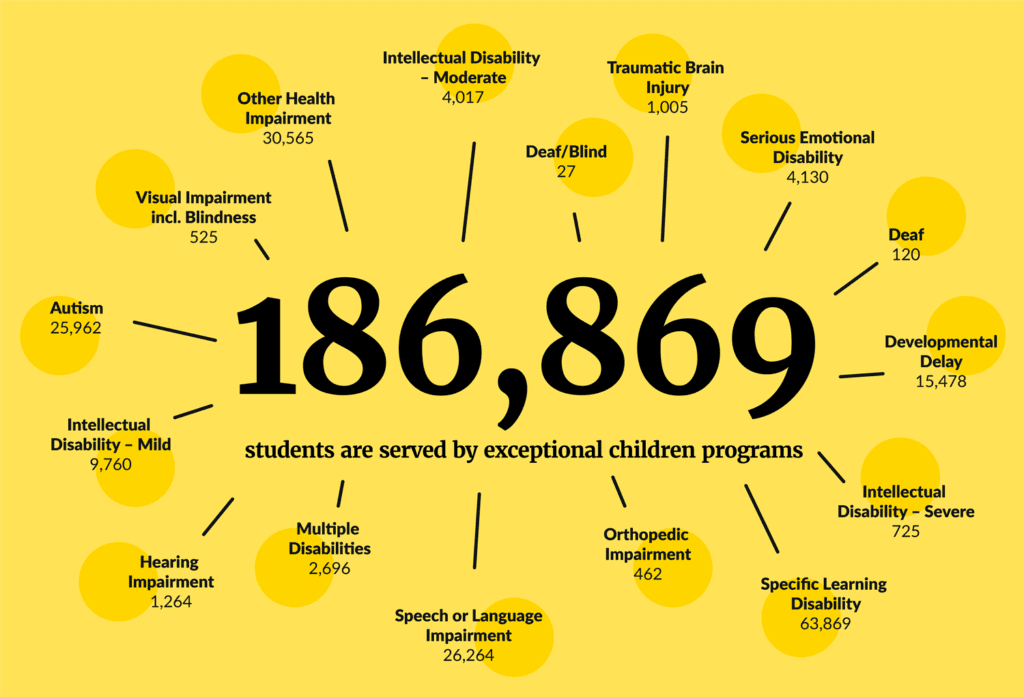
According to the CDC, “In the United States, more than 40% of school-aged children and adolescents have at least one chronic health condition.”
Our students come to our public schools with a wide array of chronic health conditions, including oral health concerns, allergies, asthma, epilepsy, hypertension, obesity, and diabetes.
According to the 2022 National Health Care Quality and Disparities Report, “nearly 20% of children and young people ages 3-17 in the United States have a mental, emotional, developmental, or behavioral disorder.”
This shows up in our classrooms as stress, anxiety, bullying, family problems, depression, learning disabilities, alcohol and substance abuse, and more.
The 2022 report also finds that “suicidal behaviors among high school students increased more than 40% in the decade before 2019. Mental health challenges were the leading cause of death and disability in this age group. These trends were exacerbated during the COVID-19 pandemic.”
In 2022, 2,756 girls ages 13 through 18 gave birth. In 2021, the year after the pandemic, two 11-year-olds and two 12-year-olds gave birth — often researchers see younger and more girls giving birth when natural disasters, pandemics, or other external circumstances force families to live together, increasing the possibility of incest.
Read more about resources for pregnant students in North Carolina.
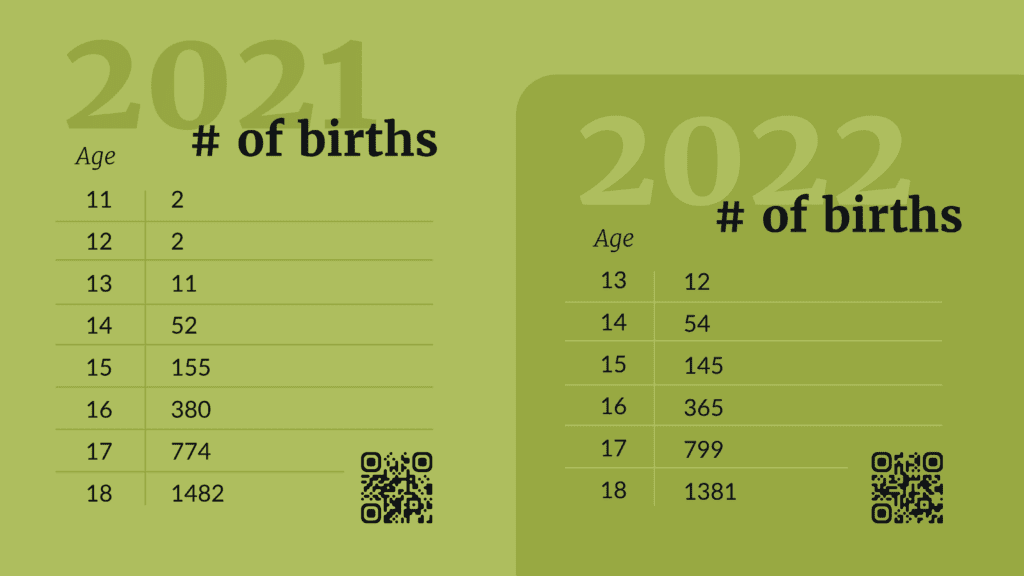
The National Center for Homeless Education reports that in 2021-22 there were 28,615 children and youth experiencing homelessness enrolled in public schools in North Carolina.
According to the N.C. Department of Health and Human Resources, more than 10,000 children are in foster care statewide.
Psychiatric residential treatment facilities served 891 students in 2022-23. On average each day, 301 students are in PRTFs. The average age is 13. The average length of stay is 279 days.
In 2022, 2,591 youth were served in a juvenile detention center. The average length of stay was 33 days.
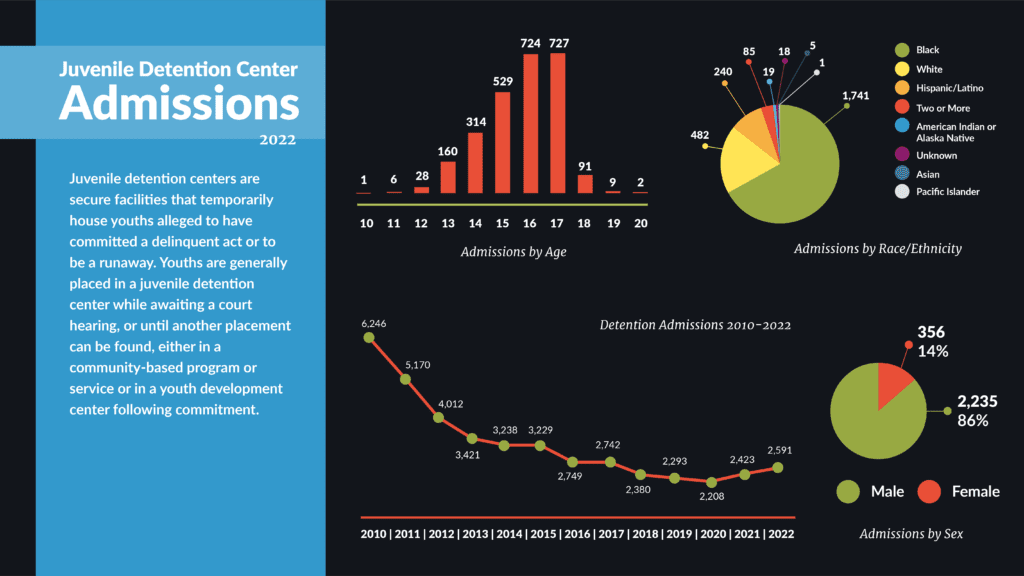
In 2022, 154 youth were committed to youth development centers. The average length of commitment was 12.6 months.
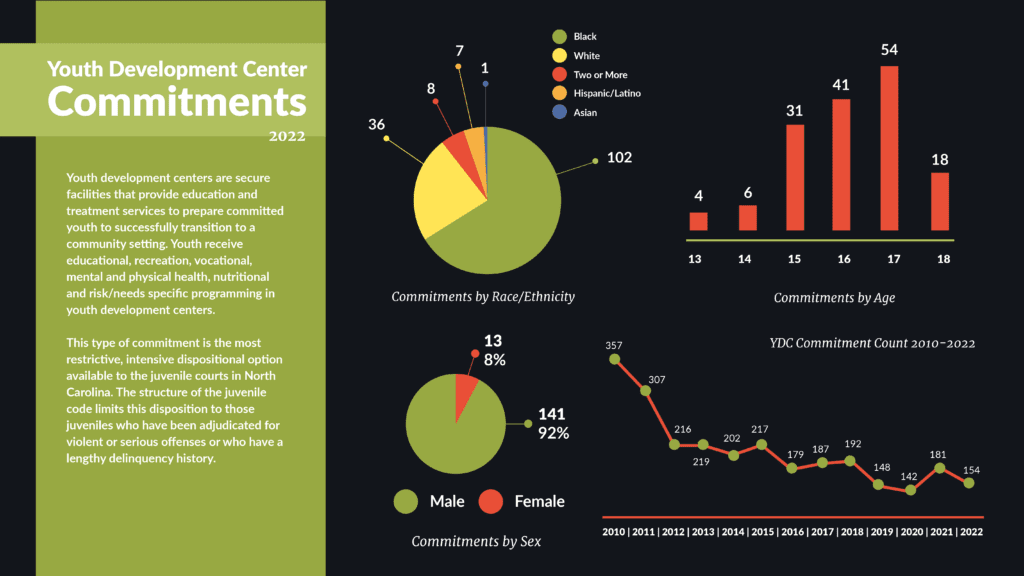
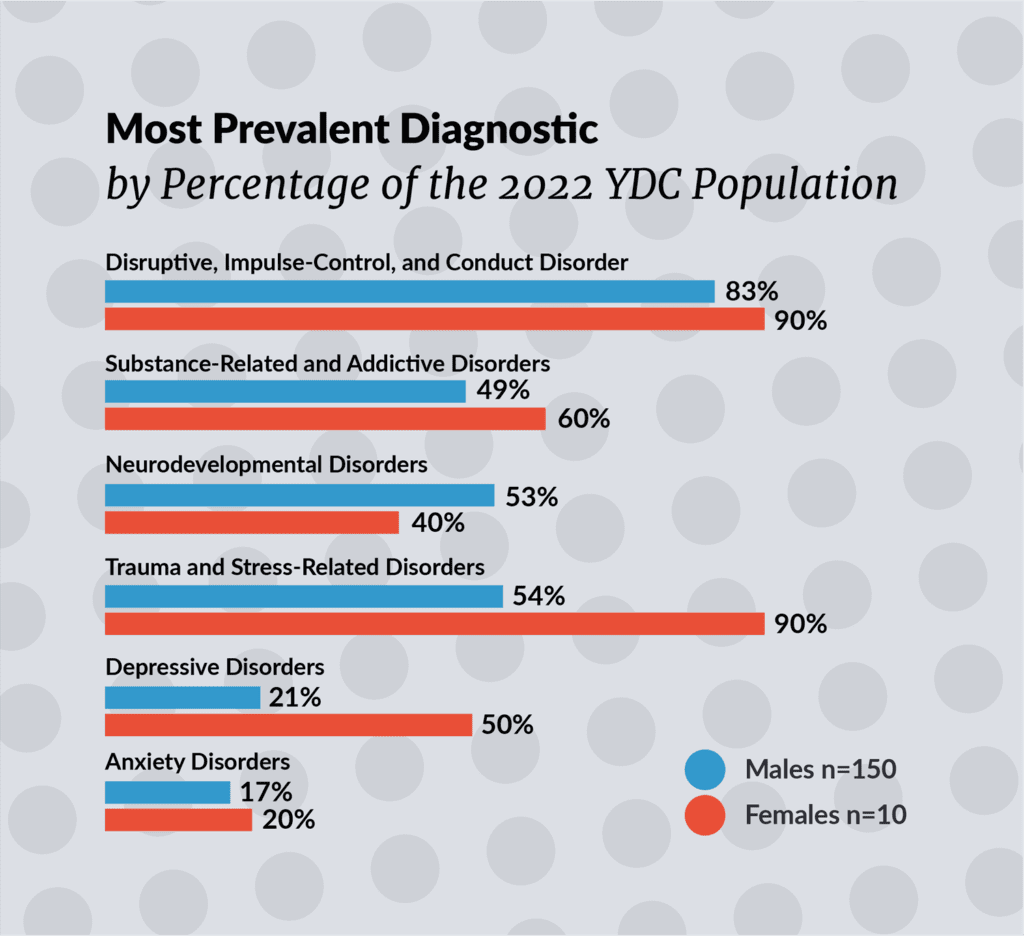
by Mary Ann Wolf, Public School Forum of North Carolina
In 2021-22, there were 101,808 educators serving our public school students.
45.5% of the students are white, but 76.4% of the educators are white.
24.8% of the students are Black, but 15.6% of the educators are Black.
19.8% of the students are Hispanic, but 4.2% of the educators are Hispanic.
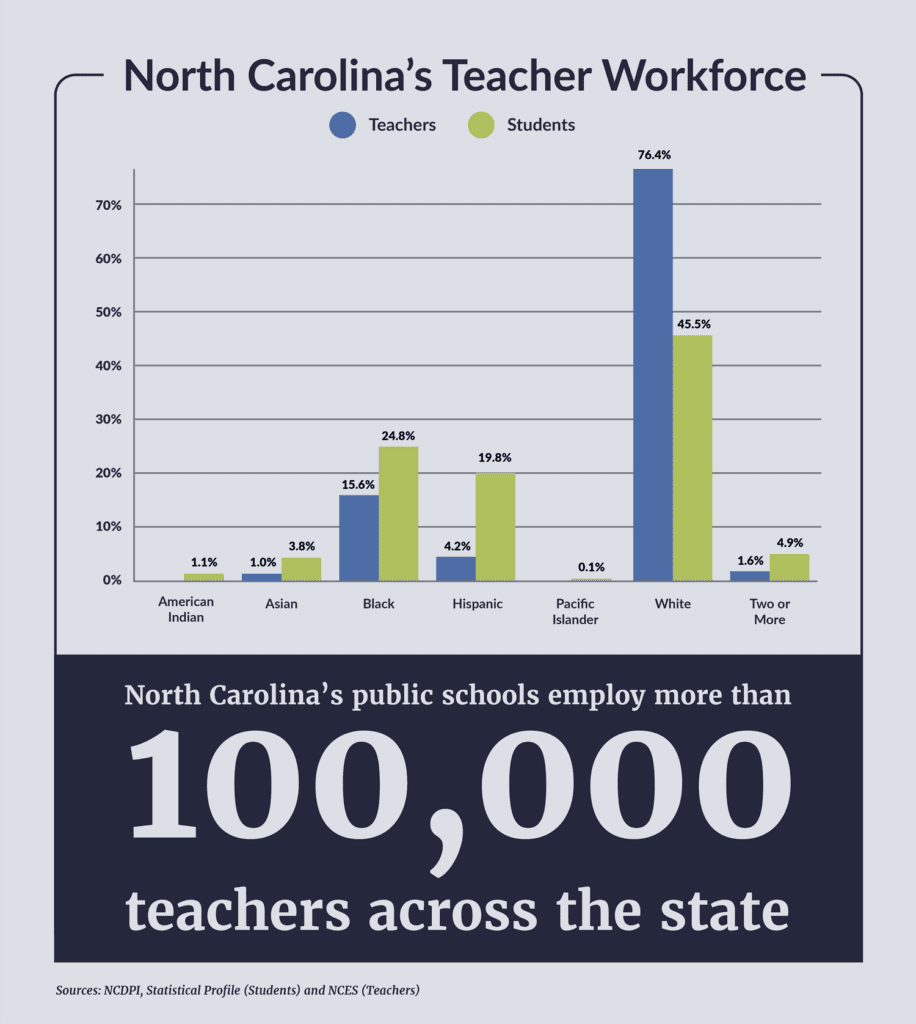
Here is a link to the NCES dashboard, and here is a link to the NCES data.
In 2024, EdNC will spotlight all of the children served by North Carolina’s 2,484 traditional public schools, 209 charter schools, nine lab schools, one regional school, and two virtual schools.
Which students would you like to know more about? Email Mebane at mrash at ednc.org.
2023-2024 Month 1 ADM Analysis
Highlights of the North Carolina Public School Budget
2023 Language Diversity Briefing
North Carolina Resident Births for 2021
North Carolina Resident Births for 2022
Education of Children in Private Psychiatric Residential Treatment Facilities (PRTFs)
2022 Annual Report, Juvenile Justice and Delinquency Prevention, N.C. Department of Public Safety
This article first appeared on EducationNC and is republished here under a Creative Commons license.
Need help understanding population change and its impacts on your community or business? Carolina Demography offers demographic research tailored to your needs.
Contact us today for a free initial consultation.
Contact UsCategories: Education

The Center for Women’s Health Research (CWHR) at the University of North Carolina School of Medicine released the 12th edition of our North Carolina Women’s Health Report Card on May 9, 2022. This document is a progress report on the…

Dr. Krista Perreira is a health economist who studies disparities in health, education, and economic well-being. In collaboration with the Urban Institute, she recently co-led a study funded by the Kate B. Reynolds Foundation to study barriers to access to…

Our material helped the NC Local News Lab Fund better understand and then prioritize their funding to better serve existing and future grant recipients in North Carolina. The North Carolina Local News Lab Fund was established in 2017 to strengthen…
Your support is critical to our mission of measuring, understanding, and predicting population change and its impact. Donate to Carolina Demography today.